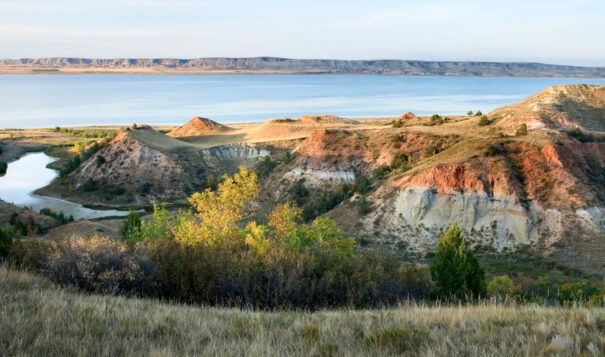Opinion Advocates for ideas and draws conclusions based on the author/producer’s interpretation of facts and data.
North Dakota oil industry misrepresents State of the Air Report
 North Dakota Landscape - Photo by Thinkstock courtesy Canva
North Dakota Landscape - Photo by Thinkstock courtesy Canva
In the recent column, “The truth about Bakken air quality,” the author references the American Lung Association’s 2022 “State of the Air” report to provide evidence that North Dakota has some of the cleanest air in the country.
As the senior director of clean air for the Lung Association in North Dakota, and someone who has worked on this report for six years, I believe that it is important to clarify our report’s methodology and findings.
The “State of the Air” report gives North Dakota some good grades for air quality, but those grades only tell part of the story. The report grades three important measures of air pollution – short-term and long-term particle pollution and ground-level ozone – not the full range of pollutants resulting from oil and gas operations. And only 10 of North Dakota’s 53 counties have monitors collecting the ozone and fine particle pollution data the Lung Association needs for its report. This means that this report only provides air quality information for some state residents, not all of them. The Lung Association has long advocated for more monitoring to provide more information on air pollution in communities.
Oil and gas development is linked to a range of health effects, including respiratory problems, headaches and neurological disorders. The toxic chemicals and pollutants released during the process can harm air and water quality and are linked to cancer and other serious health issues. Methane gas also leaks out during gas extraction, processing and transport, and is a potent driver of climate change that further exacerbates many health harms.
As a science-based public health organization, we believe local reports of illness that may be related to emissions from oil and gas extraction should be taken seriously and investigated further. More research is released regularly about the health impacts of such operations, like a recent study in Preventive Medicine Reports that explores the connection between proximity to gas production activity and birth weights across the United States.
The purpose of the “State of the Air” report is to provide the public with information about the quality of the air they breathe so that they can protect themselves and take action to protect their communities as needed. But it cannot be used as a single source to prove that air quality is healthy. Expanded air quality monitoring is needed to determine the true impacts of oil and gas development on our health.
Jon Hunter, Senior Director of Clean Air for the American Lung Association in North Dakota
